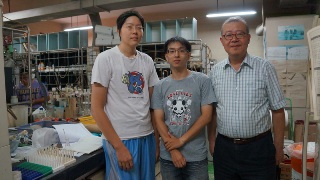May 18 2015
Researchers from the Department of Chemistry at National Cheng Kung University (NCKU), Tainan, Taiwan, have discovered that non-directional alkaline-earth metal cations possess the ability to take part in the self-assembly of 3D supramolecular boxes.
 Researchers from the Department of Chemistry at National Cheng Kung University (NCKU), Tainan, Taiwan, have discovered that non-directional alkaline-earth metal cations possess the ability to take part in the self-assembly of 3D supramolecular boxes.
Researchers from the Department of Chemistry at National Cheng Kung University (NCKU), Tainan, Taiwan, have discovered that non-directional alkaline-earth metal cations possess the ability to take part in the self-assembly of 3D supramolecular boxes.
Traditionally, it has been considered that 2D and 3D supramolecular boxes can be constructed only by utilizing directional covalent bonds that are formed between transition-metal atoms and organic ligands that are influenced by stabilization of the crystal-field. Alkaline-earth metal cations do not have any directional bonding; hence they are not utilized as structure-building blocks for the supramolecular boxes.
This study by Professor Kom-Bei Shiu and his research team from the NCKU has achieved a major breakthrough. This achievement could induce researchers to conduct further studies on the possibilities of building supramolecular boxes using both alkaline-earth metal and transition atoms. Furthermore, this research could possibly lead to discovery of new chemical reactions and the fabrication of new molecular devices in the nano-sized supramolecular boxes.
Shiu states that, in solution, molecules possess the ability to recognize one another by their shapes, and are also able to experience the force of attraction between them. Regular structures can be formed through the self-assembly process, when appropriate molecules are immersed together in a solution.
Molecules possess the self-ability to choose appropriate molecule candidates so that they are able to form a structure with a regular-shape. However, difficulties are faced in bringing together appropriate molecules under a suitable condition for the reaction to take place.
The team demonstrated that utilization of an Arrhenius acid–base neutralization process enabled the alkaline-earth metal cations to function as charged binders. This enabled easy connectivity between metalloligands into coordination polymers.
When salt is added during the neutralization process, the salt initially forms an ionic aggregate. Later on, the aggregate functions as a template and cyclizes the polymer into 3D boxes.
This study has been published as a “hot paper” in Chemistry - A European Journal.